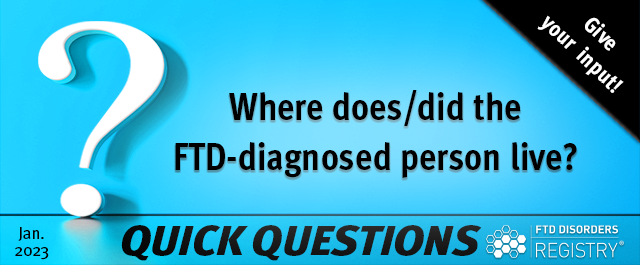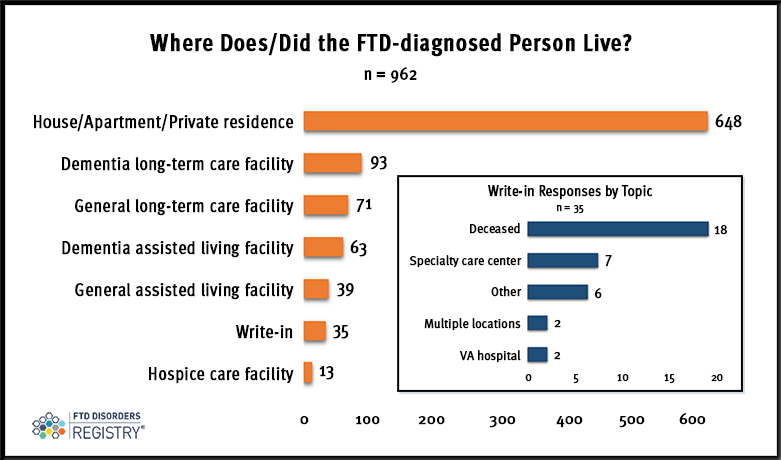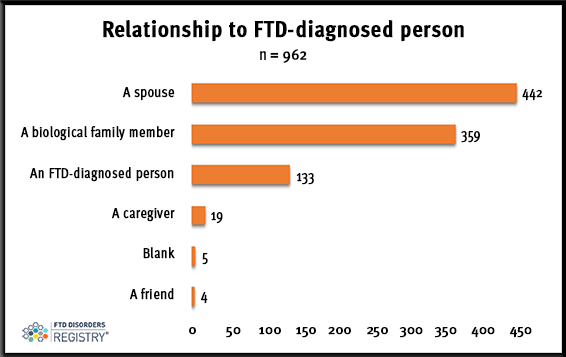PRESS & NEWS
Quick Question January 2023 Results: Where Does/Did the FTD-diagnosed Person Live?

More than two-thirds (67%) of those answering our January 2023 Quick Question indicated that their FTD-diagnosed loved one lives or lived in a private residence.
More than two-thirds (67%) of those answering our January 2023 Quick Question indicated that their FTD-diagnosed loved one lives or lived in a house, apartment, or another type of private residence.
Several people (35) wrote in their answers. The majority of these (51%) indicated that their FTD loved one had died, but did not provide information about where they lived before they passed. A couple of respondents listed several locations the FTD-diagnosed person lived as the disease progressed prior to passing away including home, assisted living, nursing home for dementia, and hospice.
Two people indicated that their loved one lives/lived in a Veterans Health Administration (VA) hospital. Other write-in responses noted various specialty care centers the person with FTD lives/lived:
People from 21 countries around the world gave their input in this month’s poll. Spouses (46%) and biological family members (37%) represented the greatest number of those who replied. Persons diagnosed with FTD made up 14%.

Where does/did the FTD-diagnosed person live?
Write-in responses by topic:

Relationship to the FTD-diagnosed person:
You can access questions and responses from last year on the Quick Questions 2022 webpage.
Together we can find a cure for ftd
The FTD Disorders Registry is a powerful tool in the movement to create therapies and find a cure. Together we can help change the course of the disease and put an end to FTD.
Your privacy is important! We promise to protect it. We will not share your contact information.



